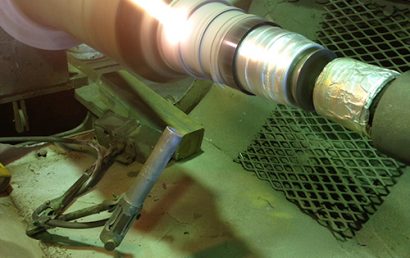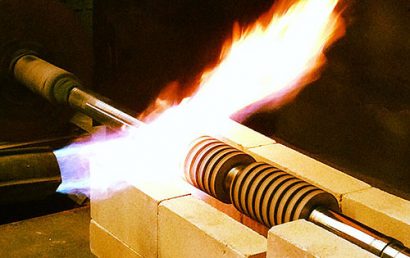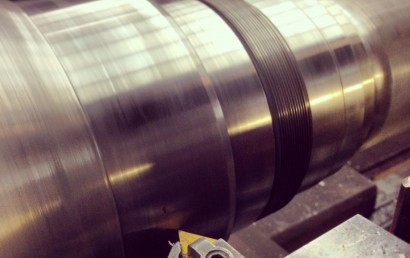HVOF Coatings For the Aviation Industry
Traditionally, particularly in the aviation industry, coating processes like plating have been used extensively. But traditional coating processes were lacking in many aspects. A more corrosion resistant coating method, a harder finish, and quicker turn time was needed. Scientists and industry leaders went in search of a better answer than traditional coatings. Enter HVOF (high velocity oxygen fuel) coatings! Today, though numerous materials can be applied using the process, HVOF tungsten carbide coatings are utilized in many industries for a number of purposes.
In this post, we’re going to take a look specifically at how aviation components are affected when they are sent in for repair and overhaul. We will also briefly touch on the process of HVOF tungsten carbide coating.
Testing and More Testing
A vast array of successful commercial applications resulted from extensive performance testing, as well as the discovery of HVOF tungsten carbide coating performance advantages. These advantages have been demonstrated in the following uses where airframe components and aviation engines are concerned:
- Propeller assemblies
- Helicopter drivetrains
- Dynamic components
- Jet engine bearings
- Actuators
- Landing gear
- Flap tracks, and more
The following characteristics are what make these coatings so desirable:
- Corrosion resistance that is equal or better to traditional coating methods
- Fatigue resistance
- Impact resistance
- Improved wear
The traditional coating methods just referred to can entail the following (as examples):
- Engine components and other aviation uses which formerly utilized a conventional hard chrome plating.
- Wing flap tracks which typically utilized electoral less nickel coatings.
HVOF Tungsten Carbide Coatings Are More Than Just Protective
In addition to serving as an excellent coating that can be used for protection, tungsten carbide can be used to repair or rebuild corroded or worn components from aircraft. These components, during overhaul activities or routine maintenance, have been removed and now, rather than being discarded, can have new life breathed into them thanks to this miraculous coating process.
Using the advanced coating, the dimensional integrity of airplane flap tracks can be restored after suffering damage during service. So, not only can tungsten carbide be used to extend the “usual” lifespan of a part, it can be used to reinvigorate parts when needed.
Thermal Spray
In the world of thermal spray, HVOF is only one process. This particular process is used for applying coatings and repairing parts by depositing tungsten carbide.
How does the process work? Here are the basics:
- At a high temperature, fuel gas is fed into a special nozzle’s combustion chamber.
- Here it burns, producing a high pressure, hot gas stream.
- Next, injected into this gas stream are tungsten carbide powder particles.
- Toward the substance being coated, the stream is directed to create a durable, dense coating (<1% porosity).
Using robotic apparatus, the process of HVOF coating application usually takes place in a spray booth. The reason for this is twofold:
- Velocities of 4500 feet per second can be reached exiting the nozzle.
- At around 5000°F, combustion temperatures for the process are dangerous.
Who Can You Rely on for HVOF Tungsten Carbide Coatings?
A&A Coatings uses the HVOF application with their tungsten carbide coatings, as well as other thermal spray methods with which to apply various coatings. For virtually every industry known to mankind, coatings of some sort are used in some way. They can serve as protection for a part or surface, offer a safer environment (texturing a walkway to discourage slipping), and so much more. When it comes to thermal spray, we’ve been at the forefront of the industry since 1944. We know coatings inside and out! Contact us today to find out what our coatings can do for your business.



